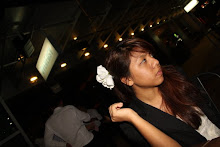WEEK 8 Chapter 10 - AN ISSUE - CRISIS PERSPECTIVE
Chapter 8 - REPUTATION MANAGEMENT: A DRIVING FORCE FOR ACTION
I found this Week 8 related to Week 7. Both chapters are interlink in a hidden way. Week 8 focuses on reputation management and how important it is to have on. Reputation aren't only important for the image of the company but also for people. So this is where week 7 comes in. In week 7, the chapter highlights on having a good relationship with the people that you're working with in the company. Thus having when you have a good relationship with your co-workers, you will then have a good reputation. People will be fond of you but if you do not work hand in hand with your co-workers well, your reputation will do falter. Its the same for companies that work with other companies.
Other than that, another section of the chapter that I found very interesting was Corporate identity structures. Since this chapter got me really interested in reading it and googling more about the chapter, I decided to attempt the questions.
So this week I would like to answer some questions give from the book provided.
The first question covers on Introducing reputation management.
Qn: What creates a good (or bad) reputation? Is the reputation of a business or an individual important? Why?
Reputation is a very important element of business or an individual as how the business is perceived through the eyes of their customer, suppliers, employees and other interested parties. Like they say, the first impression of someone or something goes a long way. We want to be in the good books of our customers as the word of mouth is very powerful. People do talk about such things. Everything that the business or individual does helps to define the reputation of their business.
Thus this enhances the companies business by attracting and retaining customers. As I have mentioned earlier, people do talk to each other about news. When customers mention how good the business is or has become, there will enhance the reputation of key managers. As well as maintain value in sale or merger.
Topic: Corporate identity structures.
Qn : Look on the shelves of a retail store or at print media advertisements and find examples of a monolithic , and endorsed, and a branded approach to corporate identity structure. Why do you think these particulars companies have adopted their chosen strategy? What are the advantages and disadvantages of each approach.
As mentioned , Monolithic is known as the single business identity.
Endorsed is known as the multi-business identity.
Lastly, Branded is known as the brand based identity.
This question that was given in the book was very interesting. I tried doing this question trying to find an example of monolithic, endorsed and a branded

At first I couldn't think of any except Nestle ( since it was already given in the book) but after heading down to the convenience store around the corner, I found out there are more. Kraft is one endorsed example which sells biscuits and cheese. I was only able to answer the first part of the question, I'm not exactly sure why each company chose their chosen strategy. If you know, maybe you could fill me in?




